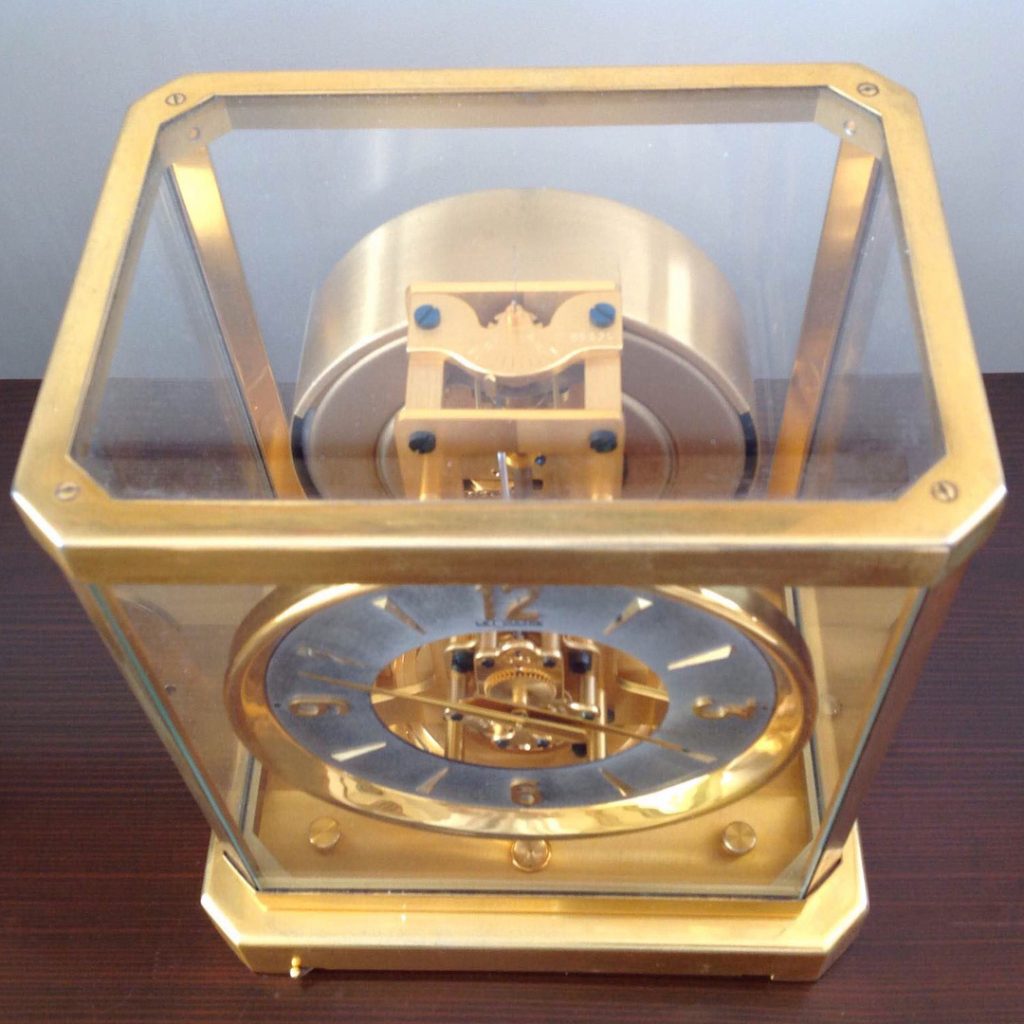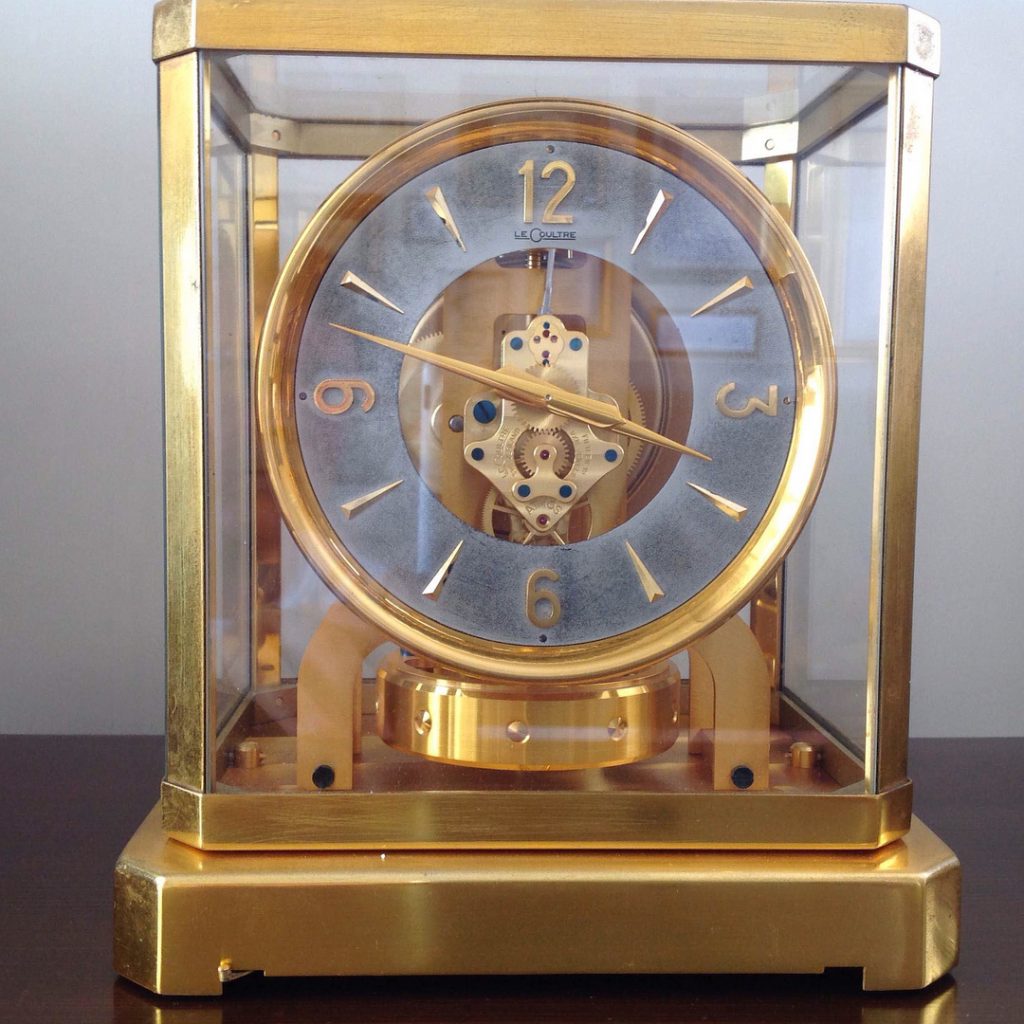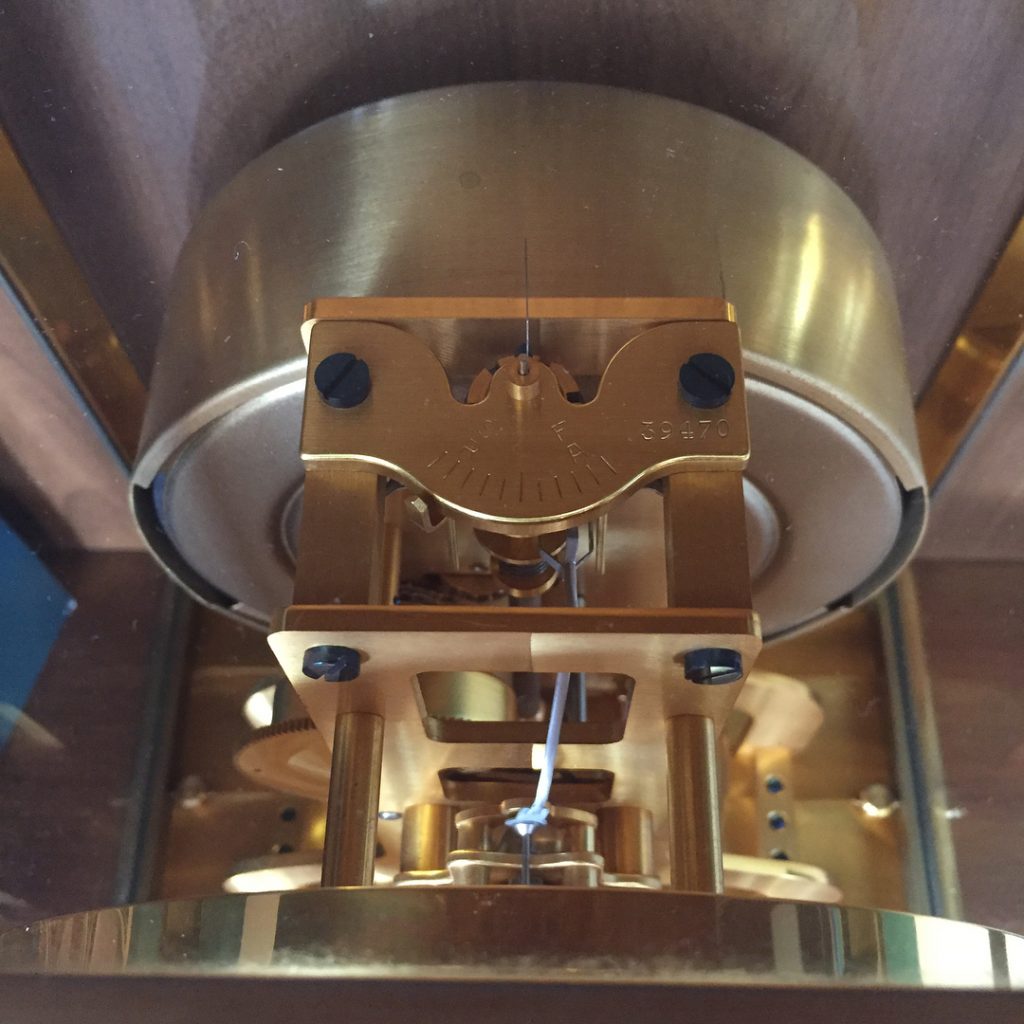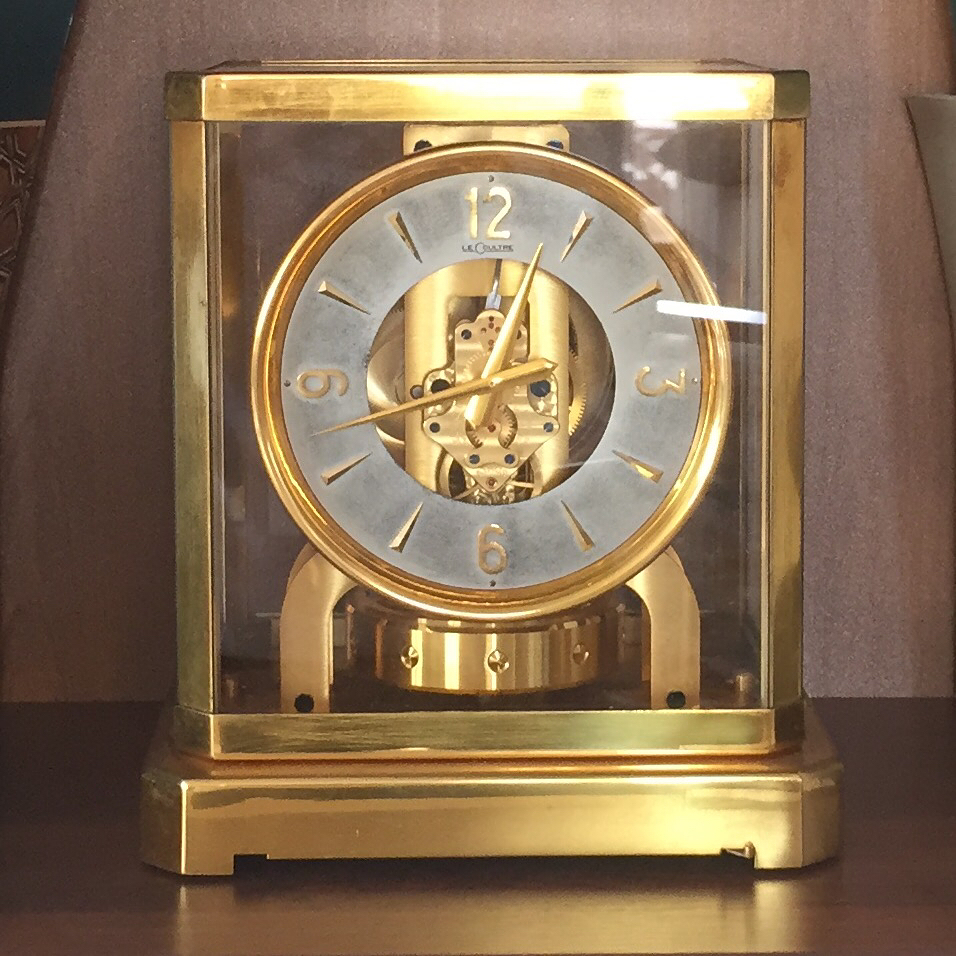Unique in the world. Atmos, the clock that lives on air.
WITH NO BATTERY, ELECTRIC CURRENT OR WINDING, the Atmos clock has been living on air since 1928. Jean-Léon Reutter, in 1928, designed a completely revolutionary clock drawing its power from variations in the ambient temperature. It took yet a few more years of research by Jaeger-Le Coultre watchmaking firm to transpose the idea into technical reality and patent it. The result came astoundingly close to perpetual motion: the Atmos clock was born.
Its principle is amazingly simple. In a hermetically closed capsule is a gaseous mixture which expands when the temperature rises and contracts when it falls. Connected to the driving spring, the capsule swells like the bellows of an accordion and winds the clock movement up constantly. Between 15 and 30 degrees Celsius, temperature fluctuation of a single degree is enough to ensure an operating autonomy of about two days.
The gearing is so perfect that it requires no lubrication. Oil would merely clog the mechanism. Its balance moves slowly and majestically, performing only two vibrations per minute. It hangs from a steel alloy wire that is as fine as a hair and yet stable and resistant, thereby keeping any loss of energy due to friction to a minimum.
Mineral crystal and brass case with a front door. Silvered ring dial with applied Arabic numerals and markers
Case size : 21 x 23,5 x 17 cm.
_______
Its power source is an internal hermetically sealed capsule containing a mixture of gaseous and liquid ethyl chloride, which expands into an expansion chamber as the temperature rises, compressing a spiral spring; with a fall in temperature the gas condenses and the spring slackens. This motion constantly winds the mainspring. A temperature variation of only one degree in the range between 15 and 30 degrees Celsius, or a pressure variation of 3 mmHg, is sufficient for two days’ operation.




